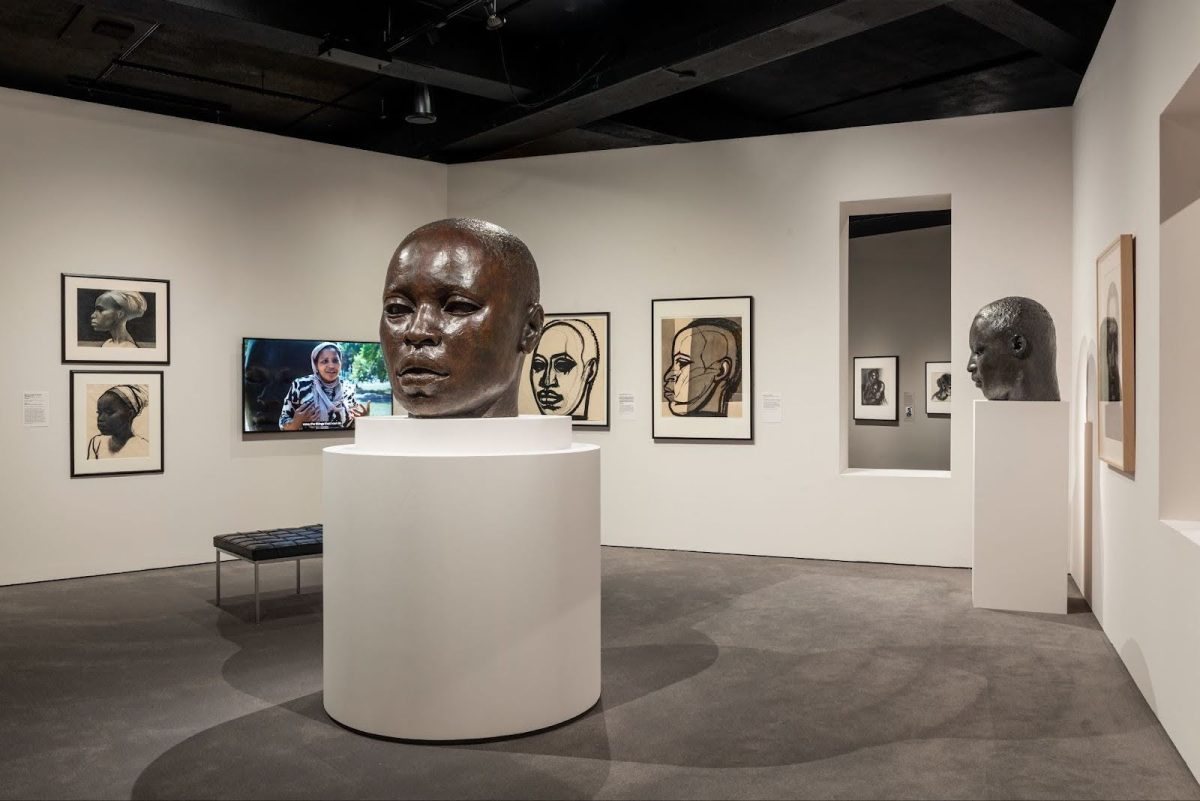 By Ralah Sanadiki, news correspondent
By Ralah Sanadiki, news correspondent
“Inside the Mind of M.C. Escher,” an exhibit at the Museum of Science in Cambridge offers an insight into the brilliant and extraordinary cranial craziness of Dutch artist Escher.
Maurits Cornelis Escher was born in Leeuwarden, Netherlands. After failing his high school exams, he enrolled in the School for Architecture and Decorative Art in Haarlem, Netherlands.
The style that grew out of his talent and eclectic psyche became iconic of the inherent collaboration of mathematics and art.
In exploring all possible manipulations of depth, height, shade and perspective, Escher created prints that both dazzle and dumbfound the human eye and mind.
Located in the Blue Wing of the Museum of Science, the exhibit is comprised of a main hall containing Escher’s work, information about his life and art, and activities to demonstrate the illusory nature of his work.
The most famous of his pieces are hung side by side along all four of the hall’s walls. True to the artist’s style, the color scheme with which the room was designed is primarily achromatic, reflecting his choice of muted, but nonetheless striking, hues.
A drawing station in the center allows visitors to try their hand at replicating Escher’s “Hand With Reflecting Sphere,” around which visitors of all ages stare at their reflection in a metallic orb and attempt to draw the surreal image before them.
Visitors can be a part of his geometrically overwhelming world. At the far left corner of the hall is a showcasing of paper foldings to demonstrate how flat shapes can be transformed into 3-D objects, a technique Escher was able to master on flat surfaces. He would con his audience into believing that the objects were actually in 3-D.
Freshman biology major Ingy Jabri said she appreciated the art forms in relation to her field of study.
“The structures Escher uses in his work remind me of atomic orbitals, compositions of molecules and DNA structures,” Jabri said. “Its great to be able to so easily make a connection between art and science because that relationship is so clear and apparent in his work.”
Mikey Llodra, an architecture graduate student at Wentworth Institute of Technology, said he was able to appreciate Escher’s art and draw connections with his architecture work.
“The abstract shapes and forms that Escher uses are so familiar to me, seeing as I have to use his techniques as a part of my study whenever I’m sketching or planning out a project,” Llodra said.
Leaving the main exhibit hall, a walkway on the right has examples of optical illusion and depth deception in the form of activities and artworks from other artists.
One such activity is called the breathing square, in which visitors gaze at a rotating square which appears to be expanding and contracting (“breathing”), but only appears so because of the rotations.
Artists from Japan, Spain, Italy and the United States are also featured.
Italian painter Giuseppe Arcimboldo’s “Vetrumnus” hangs just outside the main hall and is another example of an artist’s manipulation of dimension, as he uses fruits and vegetables to compose a portrait of Emperor Rudolf II, the Holy Roman emperor during the 16th and 17th century.
Japanese artist Kuniyoshi Ichiyusai plays with the human form by constructing an image of a man’s face using feminine and masculine characteristics.
“Inside the Mind of M.C. Escher” is open until Jan. 2 at the Museum of Science, located at 1 Science Park. The exhibit is $21 for patrons 12 and older.








